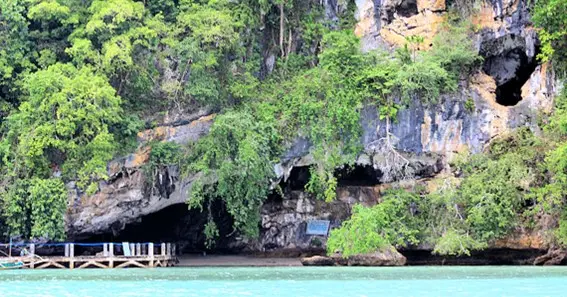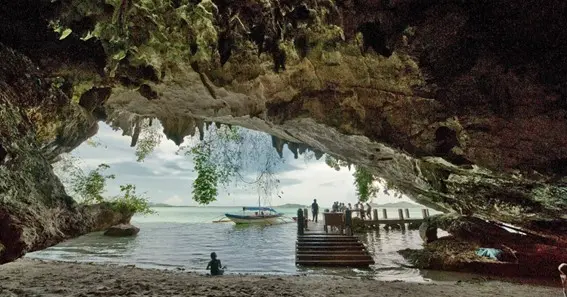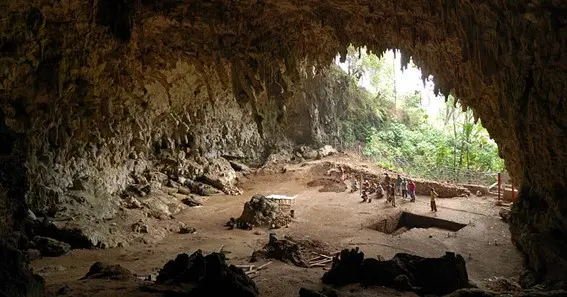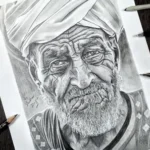Have you ever gotten wind of Tabon Man or the so-called Taong Tabon? This is where it gets pretty exciting in Philippine prehistory.
What Is “Taong Tabon”?
Tabon Man, known by anthropologists as Homo Sapiens(Callao Man) is the remains of a human discovered in Tabun Cave within Palawan, Philippines. Archaeological finds from tens of thousands of years ago provide important clues as to who the first humans in the Philippines were.
Also Read N: Debunking The Four Main Myths About Family Lawyers
Discovering The Tabon Caves

THE TABON CAVES (Quezon, Palawan)The sacred Tabon Cave in Quezon offers tourists many activities related to the numerous significant archaeological discoveries. The caves have also provided some artifacts from the New Stone Age, and implements of gold that date back to A.D. 500 – evidence of Philippine civilization at a time when Greek culture was only just beginning in Europe.
Also Read P: Mars Hydro LED Grow Light: Illuminate Your Garden, Elevate Your Harvest
Who Were The Taong Tabon?
Taong Tabon (c.22 -20,000 yearsCalBP) – a 61 mm modern human male cranium discovered in the Tabon Caves on Palawan Island is considered one of the earliest skeletal remains and has been traced to the Late Pleistocene period; [38] They are the oldest known people of the Philippines and they display sophisticated techniques for living on their environment, as well with rich cultural traditions adapted to it.
Importance Of The Taong Tabon Discoveries

The finds in the Tabon Caves rank among the most important discoveries about early Philippine history as they paint a picture of sophisticated peoples who lived here half a million years or more ago. It illustrates the resilience and creativity of Taong Tabon to adapt to different ecological niches.
History And Culture
Through the study of Taong Tabon, we gain insight into our past and the different waves of cultures that defined who Filipinos are today. It just underscores the Philippines’ place in human history and our contributions to global archaeological knowledge.
Conservation And Study
The Tabon Caves and Taong Tabon remains are still ongoing to be preserved. These are made to protect this significant cultural treasure and the further study of Philippine prehistory for future generations.
Conclusion
So there you have it, a short look into the engaging history of early humanity in the Philippine lands where we found Taong Tabon otherwise known as Middle Man. It lays bare the intricacies of ancient Filipino societies and their lasting influence on molding modern-day Philippine culture. Thus, such creativity makes us resilient and inspiring individuals the Taong Tabon is an essential part of our cultural heritage.
FAQ
What Is Taong Tabon?
Tabon Man, according to the sources of ancient human remains has been found in Tabon Caves Palawan Philippines. The remains are tens of thousands of years old and teach us in ancient human life the region lived.
Where In The Region Of Tabon Caves Can You Find A Taong Tabon?
The Taong Tabon remains were found in the archaeological site of 3,010 hectares (7.4 acres) Area-1 on Lipuun Point near Palawan’s Tabon Caves.
When Did The Taong Tabon Exist?
The Taong Tabon was thought to have lived last during the late Pleistocene period around 22,000-24,000 years ago. They had already been recorded as one of the oldest human residents in the Philippines.
What Are Some Things We Can Learn From The Study Of Taong Tabon?
It is a source of data about Filipino culture[…] based on the socio-cultural patterns and behaviour it may have exhibited as much as 21,000 years ago. It gives archaeologists and historians a way through which to view how early human civilization interacted with its environment, as it has gradually expanded over millennia.
What Is Special About The Tabon Caves?
Tabon Caves; The Tabon Cave Complex is another main archaeological destination that resulted in an enormous range of material associated with cultures as old as the first Hoabinhian hunting and gathering settlement or about 50,000 years old. These findings give insights into human evolution, migration routes, and even the cultural advancement in Southeast










